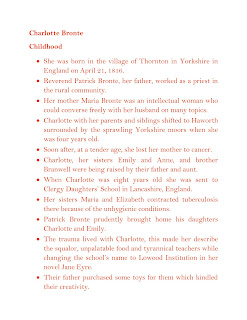Octopus 1. You may often have heard someone proudly saying that he has blue blood running through his veins. 2. This figuratively means that he is the descendant of a royal dynasty. 3. Did you know that a creature living in the deep blue ocean really has blue-coloured blood? 4. We are talking about the mollusc, the eight-legged octopus here. 5. Octopuses are natural marine architects which build homes for themselves with rocks. 6. With their powerful arms, they can easily shift rocks from one venue to another. 7. Their rock den abodes have a stone door entrance which the octopus can lock after it safely enters its sweet home. 8. Even after they are securely at home, they are better off without visitors. 9. They disperse shells and rocks to carefully conceal themselves within their dens. 10. ...
Popular posts from this blog
The White-Footed Deer Poem by William Cullen Bryant It was a hundred years ago, When, by the woodland ways, The traveller saw the wild deer drink, Or crop the birchen sprays. Beneath a hill, whose rocky side O'erbrowed a grassy mead, And fenced a cottage from the wind, A deer was wont to feed. She only came when on the cliffs The evening moonlight lay, And no man knew the secret haunts In which she walked by day. White were her feet, her forehead showed A spot of silvery white, That seemed to glimmer like a star In autumn's hazy night. And here, when sang the whippoorwill, She cropped the sprouting leaves, And here her rustling steps were heard On still October eves. But when the broad midsummer moon Rose o'er that grassy lawn, Beside the silver-footed deer There grazed a spotted fawn. The cottage dame forbade her son To aim the rifle here; 'It were a sin,' she s...
Inclusive Playgrounds Pictures of wheelchairs, crutches, and ramps generally get less likes on social media by a mainstream crowd. Many of them erroneously think that they all represent a situation which is tragic, so the like should be skipped. They little understand that all of these are actually positive images as they encourage mobility and inclusiveness. Able people often use regressive phrases like ‘confined to a wheelchair’ instead of ‘wheelchair user’. They don’t gauge that for a disabled person, it’s helping them move instead of imprisoning them. It’s often assumed in schools that kids with disabilities need to sit on a bench during physical education classes, and only watch on as other children play and have fun, during his/ her school tenure. There was a boy in our school who had lost a limb. However, he stood along with his class in sports drill, and participated and races. He finished last in sprints, but still took part. Once, I heard a child say, “Oh, I ...








Comments
Post a Comment